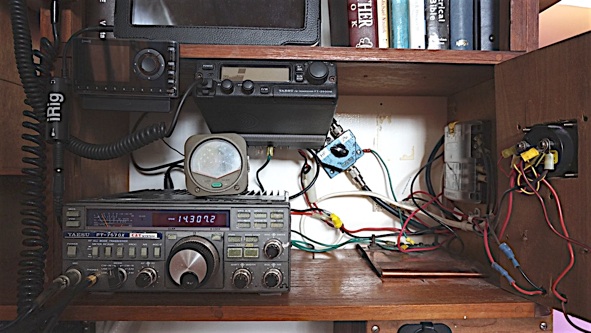The RF ground system has to collect this current from the sea and send it back to the transceiver via the transmission line. The sea water around the boat is a good collector and performs much like a metal plate (it is about 80% as effective as a metal plate), but the boat itself is nothing like a metal plate (unless it's a steel boat). We have two problems to deal with:
One is that the RF current that is collected by the sea has no easy way to get back to the transceiver inside the fiberglass/wood boat. The material the boat is made of impedes the RF current flow.
Two, the boat, which occupies a large percentage of the space under the radiator, is not a good collector and doesn't collect it's share of the electric current.
If we could make the boat a conductor, like metal, it would allow the electric current to pass and would be a good collector too. Steel boats are good collectors (they have other problems - it's hard to get all the electric current to go to one collection point)
The best we can do with a fiberglass or wood boat is to use what metal parts we have to collect as much electric current as possible. But if we want to avoid problems with our other electronics on board we have to be selective in which parts we use, where the parts are located on the boat, and the distance each one is from the radiator.
We can also install an external ground plate somewhere close to the backstay but in the sea, and wired to the shield of the transmission line (The RF ground connection point.)









